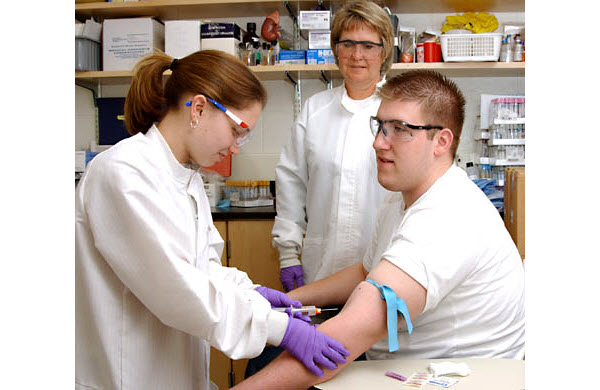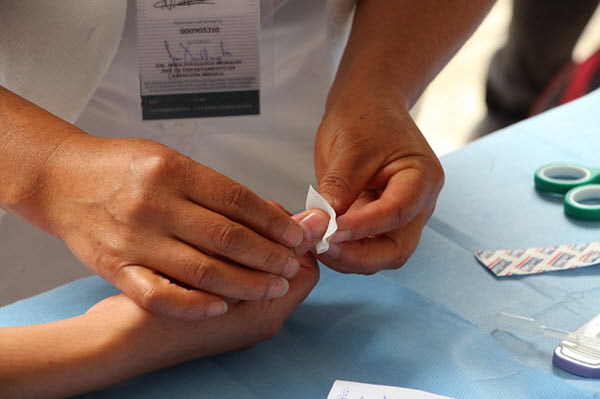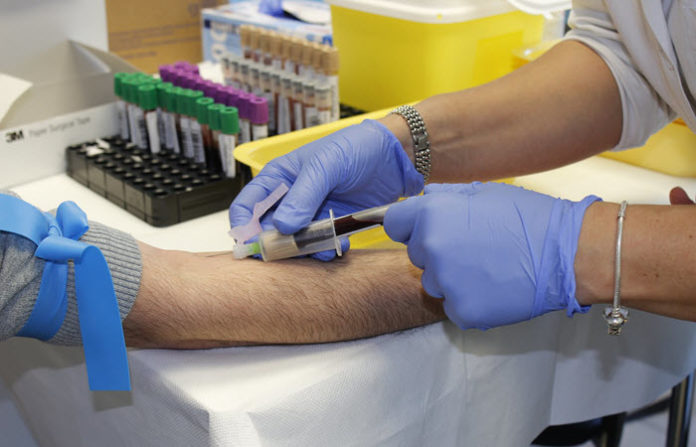Being a phlebotomist isn’t that easy but it’s a highly rewarding job. It’s exciting and it gives flexible learning paths. It can challenge you every day while giving you the opportunity to save lives during an emergency.
Sounds awesome, right?
If you’re interested in this profession, here’s a handy guide on how to become a phlebotomist.
Be a high school graduate
Before you can enter any phlebotomy program, you need to have a GED or high school diploma first. This makes it important that you pay really close attention to your grades in school.
They don’t necessarily have to be outstanding but they need to be good enough to give you an edge when applying for a program. In addition to a diploma, you also need to be at least 18 years old before you can get accepted.
Complete the program

Most phlebotomy training programs are short-term. You can finish them in less than a year at a technical school or college.
By enrolling in a phlebotomy program, you’ll learn the basic skills needed for the job. You’ll be taught how to draw blood using different equipment and techniques. You’ll also learn about legal and lab safety as well as anatomy and physiology.
Now, in addition to lectures and lessons, you’ll undergo hands-on practice, too. It can be held in a hospital or other clinical setting.
There are free phlebotomy training programs you can enroll in. If you aren’t lucky enough to land one, you need to be prepared to spend money before you can be a phlebotomist.
The training cost will depend on the program you choose as well as the institution where it’s offered. Generally speaking, it ranges from $600 to $2,500 at community colleges. That may increase depending on the institution’s other charges.
If you prefer to enroll in a technical school or facility, the cost can range from $700 to $1,400. For online phlebotomy training courses, you may have to pay $300 to $700. The cost is generally lower since it doesn’t include hands-on training. You’ll need to complete and pay for that separately.
Get Certified
You’re not really required to become certified to practice phlebotomy. However, since most employers prefer applicants with certification, it’s best to become certified.
In addition to giving you a broader range of tasks and activities you can perform, becoming certified can also increase your salary.
You can get your certification from the following organizations:
- National Healthcare Association
- American Society for Clinical Pathology
- American Medical Technologists
To maintain your status, you’ll need to obtain continuing education credits. Another way is to complete a certification management program.
Become Employed
Now, once you’re done with all of the steps above, it’s time to look for and land your dream job.
With a high demand for phlebotomists, don’t be surprised if a recruiter approaches you as you are completing the requirements above. This demand, however, doesn’t mean that you shouldn’t be active in looking for employment.
Try your best to be familiar with a phlebotomist’s job. You can start making friends in the same field, talk to a hospital staff, reach out to a medical institution’s HR department and ask for employment opportunities.
Where can you work?

You actually have a lot of options. Aside from working in a hospital, you can also practice phlebotomy in the following areas:
- Private practices
- Emergency clinics
- Local blood banks
- Nursing homes
Your working schedule will depend on where you choose to work. If you prefer working in a hospital, expect to work overnight instead of the regular 9 to 5 schedule. If you prefer to have a routine, try looking for a job at private practices which are generally open during regular business hours. You can also try becoming a traveling phlebotomist.
Is it the right career for you?
While phlebotomy offers great benefits, it’s not for everyone. Before you enroll in a program, check if you have the following qualities:
- Great attention to detail
- Highly organized
- Patient
- Not squeamish about blood
- Possesses great people skills
- Can stand on feet for hours at a time
- Can work well under pressure
- Has good communication skills
- Must be accurate
- Likes challenges and responsibilities
See Also: The Top Phlebotomist Pros and Cons You Need to Know
Salary
A phlebotomist’s average hourly wage is at $15.50 with an annual wage at $32,230. If you are just new, you can expect to be paid between $10.46 and $12.27 per hour. If you are certified and you have ample experience, your rate can increase to $20.77 hourly.
Now, in addition to getting paid that much, you are also entitled to several benefits, like health insurance and retirement pension. Be sure to clarify these benefits with your employer before signing any contract.



















